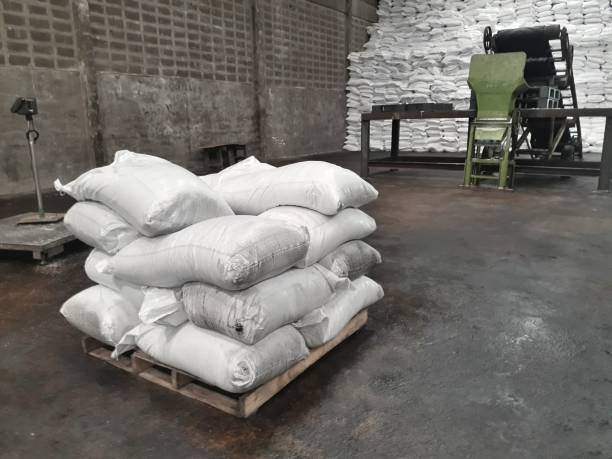How Many Yards Does a Concrete Truck Hold?
This post contains affiliate links. This means I will make a commission at no extra cost to you should you click through and make a purchase. Read the full disclosure here.
When embarking on a construction project, it’s essential to have a solid understanding of various construction equipment, including concrete trucks. These trucks play a vital role in delivering ready-mix concrete to construction sites efficiently. One crucial aspect to consider is the capacity of concrete trucks. In this article, we will delve into the topic of how many yards a concrete truck can hold, exploring different types of concrete trucks, factors affecting their capacities, and the importance of determining the appropriate capacity for your construction needs.
Understanding Concrete Trucks
Concrete trucks, also known as mixer trucks or cement trucks, are specialized vehicles designed to transport and mix ready-mix concrete. They consist of a large drum mounted on the back of a truck chassis, which rotates to keep the concrete mixture in motion, preventing it from hardening before reaching the construction site. These trucks are commonly seen on construction sites, ensuring a continuous supply of fresh concrete for various applications.
Types of Concrete Trucks
There are different types of concrete trucks available, each with its own unique design and purpose. Some common types include:
1. Standard Transit Mixers
Standard transit mixers are the most commonly used concrete trucks. They have a drum capacity that typically ranges from 8 to 12 cubic yards, allowing them to carry a significant amount of concrete. These trucks are versatile and suitable for a wide range of construction projects.
2. Volumetric Mixers
Volumetric mixers, also known as mobile batch plants, offer more flexibility in terms of concrete production. Unlike standard transit mixers, volumetric mixers have the ability to mix concrete on-site, allowing for customized concrete batches. The capacity of volumetric mixers varies depending on the model but can range from 4 to 12 cubic yards.
3. Rear Discharge Mixers
Rear discharge mixers feature a unique design where the drum is located at the rear of the truck. This allows for precise discharge of the concrete, making them suitable for projects with limited access or those requiring accurate placement. The capacity of rear discharge mixers can range from 6 to 10 cubic yards.
Typical Capacities of Concrete Trucks
The capacity of a concrete truck refers to the volume of concrete it can carry in its drum. The most common unit of measurement for concrete truck capacity is cubic yards. Here are some typical capacity ranges for different types of concrete trucks:
- Standard transit mixers: 8-12 cubic yards
- Volumetric mixers: 4-12 cubic yards
- Rear discharge mixers: 6-10 cubic yards
It’s important to note that these capacity ranges can vary based on the specific model and manufacturer of the concrete truck.
Factors Affecting Concrete Truck Capacities
Several factors influence the capacity of a concrete truck. It’s essential to consider these factors to determine the appropriate truck capacity for your construction project. Here are some key factors to consider:
1. Truck Size and Weight Limits
Concrete trucks need to comply with local transportation regulations regarding size and weight limits. These regulations may vary depending on the jurisdiction. Therefore, the size and weight restrictions can affect the maximum capacity of a concrete truck.
2. Drum Design
The design of the drum also plays a role in determining the capacity of a concrete truck. Factors such as drum diameter, length, and shape can impact the amount of concrete the truck can hold. Manufacturers optimize drum designs to achieve the best balance between capacity and truck size.
3. Axle Configuration
Concrete trucks have different axle configurations, such as single axle, tandem axle, or tri-axle. The number and arrangement of axles affect the weight distribution and stability of the truck. The axle configuration can influence the allowable load and, consequently, the capacity of the concrete truck.
4. Legal Load Limits
Each jurisdiction sets legal load limits to ensure road safety. These limits restrict the maximum weight a truck can carry. Concrete truck capacities must comply with these legal load limits, which can impact the total volume of concrete that can be transported.
Importance of Determining Concrete Truck Capacity
Determining the appropriate capacity for a concrete truck is crucial for efficient construction operations. Here are some reasons why it is important:
1. Optimal Resource Allocation
Knowing the capacity of concrete trucks allows construction managers to allocate resources effectively. By matching the truck capacity to the concrete requirements of a project, managers can optimize the number of trucks needed, reducing unnecessary costs and enhancing productivity.
2. Minimizing Delays
Insufficient truck capacity can lead to delays in concrete delivery, which can disrupt construction schedules. By accurately determining the capacity, construction teams can ensure a consistent supply of concrete, minimizing potential delays and maintaining project timelines.
3. Cost Efficiency
Properly estimating the concrete truck capacity helps in managing costs efficiently. Using trucks with excess capacity can result in unnecessary expenses, such as higher fuel consumption and increased wear and tear. On the other hand, using trucks with inadequate capacity may require additional trips, leading to increased labor costs and reduced productivity.
Calculating Concrete Requirements
To determine the appropriate concrete truck capacity, it’s essential to calculate the concrete requirements of a project accurately. The calculation involves considering factors such as the volume of the concrete needed, the project timeline, and any additional requirements, such as slump or admixtures. Construction professionals can use various methods, including manual calculations or software tools, to ensure precise estimations.
Optimizing Concrete Truck Usage
The efficient utilization of concrete trucks can significantly enhance construction operations. Here are some tips for optimizing concrete truck usage:
1. Scheduling and Coordination
Proper scheduling and coordination of concrete deliveries can help maximize the use of available truck capacity. By strategically planning deliveries based on project requirements and considering factors such as traffic conditions, construction teams can minimize truck idle time and ensure efficient use of resources.
2. Batch Plant Proximity
Locating the concrete batch plant close to the construction site can reduce transportation time and increase the number of trips a concrete truck can make within a given timeframe. Minimizing travel distances improves overall productivity and allows for faster concrete placement.
3. Communication and Collaboration
Effective communication and collaboration among project stakeholders, including contractors, suppliers, and truck drivers, are essential for optimizing concrete truck usage. By maintaining clear lines of communication and sharing information in real-time, any potential bottlenecks or delays can be promptly addressed, ensuring smooth operations.
Maximizing Efficiency in Concrete Delivery
Efficiency in concrete delivery is critical for successful construction projects. Here are some strategies to maximize efficiency:
1. Pre-Planning and Preparation
Thorough pre-planning and preparation ensure that all necessary materials and resources, including concrete trucks, are ready and available when needed. This includes coordinating delivery schedules, verifying truck capacities, and ensuring proper access to the construction site.
2. Continuous Monitoring and Tracking
Real-time monitoring and tracking of concrete deliveries allow construction teams to stay informed about the progress and identify any potential issues promptly. By leveraging technologies such as GPS tracking systems or mobile apps, project managers can monitor truck locations, delivery times, and concrete usage, enabling proactive decision-making.
3. Regular Maintenance and Inspection
Proper maintenance and regular inspection of concrete trucks are crucial for their efficient operation. Routine checks of the truck’s mechanical components, drum integrity, and mixing performance can prevent breakdowns and ensure optimal functionality, minimizing downtime and maximizing productivity.
Safety Considerations
Ensuring safety during concrete truck operations is paramount. Construction sites can be hazardous environments, and precautions must be taken to mitigate risks. Here are some safety considerations:
1. Operator Training
Concrete truck operators should receive comprehensive training on vehicle operation, safety protocols, and emergency procedures. Well-trained operators can handle the equipment safely and minimize the risk of accidents.
2. Load Stability
Maintaining load stability is essential to prevent the concrete from shifting or spilling during transit. Proper loading techniques, including securing the drum and evenly distributing the weight, should be followed to ensure load stability and minimize the risk of accidents.
3. Traffic and Site Safety
Concrete trucks should adhere to traffic regulations and follow designated routes to ensure the safety of both the truck operators and other road users. Additionally, construction sites should implement safety measures, such as designated truck paths, clear signage, and traffic control, to minimize the risk of accidents.
Conclusion
Understanding the capacity of concrete trucks is vital for efficient construction operations. By considering factors such as truck types, drum design, and legal load limits, construction professionals can determine the appropriate capacity for their projects. Accurate calculations of concrete requirements and optimized truck usage help minimize delays, enhance cost efficiency, and maximize productivity. Safety considerations throughout concrete truck operations ensure the well-being of personnel and promote a secure working environment.
Frequently Asked Questions (FAQs)
How much concrete can a standard transit mixer hold?
A standard transit mixer can typically hold 8 to 12 cubic yards of concrete.
Are there concrete trucks with variable capacity?
Yes, volumetric mixers offer variable capacity and can hold between 4 to 12 cubic yards of concrete.
What are some factors that affect concrete truck capacities?
Factors such as truck size and weight limits, drum design, axle configuration, and legal load limits influence concrete truck capacities.
Why is determining the concrete truck capacity important?
Determining the appropriate capacity helps optimize resource allocation, minimize delays, and ensure cost efficiency in construction projects.
Q: What safety considerations should be taken during concrete truck operations?
Operator training, load stability, traffic, and site safety measures are important considerations for safe concrete truck operations.












